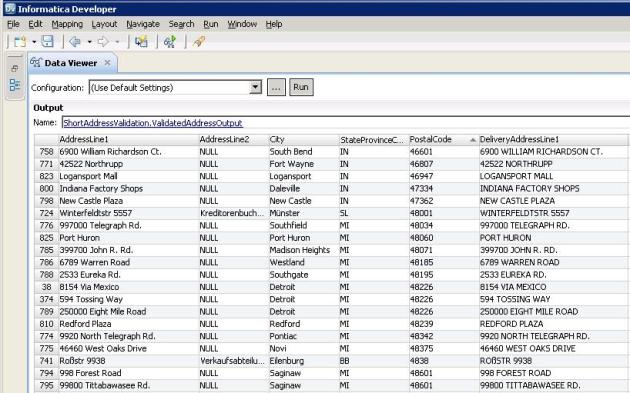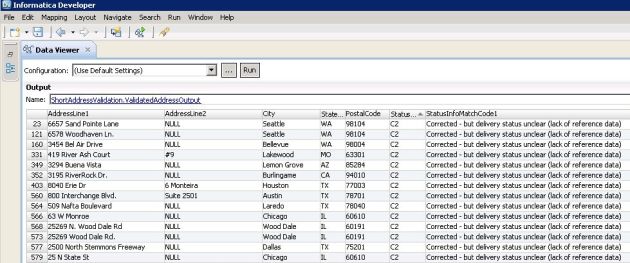Why?
There are plenty of aspects of address validation to write about.
Validating addresses can be done with many different tools, each with their own specific details on how to do it. There are various ways to validate address within each tool to produce different outcomes. And there are various ways to manage and integrate this data back into enterprise, operational systems.
While all of this content is very helpful and important to convey, it is my belief that it is essential to understand, write about and discuss why address validation is important to an organization and their master data management (MDM) efforts.
Here are a few reasons why address validation is so important to any organization (feel free to comment and suggest others!):
- Without valid address information, return mail can impact an organizations bulk mail status and lead to increased mailing costs
- Without valid address information, billing operations generate negatively impacting cycles of billing collections and corrections which has a negative impact on revenue assurance
- Without valid address information, marketing campaigns are not fully leveraged
- Without valid address information, marketing techniques like house-holding cannot fully realize their potential
- Without valid address information, customer care operations are impeded
- Without valid address information, customer perception and the customer experience is negatively impacted
- Without valid address information, an organization is open to federal regulatory fines resulting in the failure to honor contractual obligations
- Without valid address information, shipping operations experience failures which generate negatively impacting cycles
- Without valid address information, supply chain management efforts are comprimised leading to reduce costs and increase effectiveness
- Without valid address information, asset management efforts for business models built on locational awareness, like housewares rental providers and home security providers, are seriously comprised
I’m sure there are other reasons, but the key message to convey is that validating address information is a critical component to business operations throughout the enterprise.
How?
Now that we’ve covered why it is important to validate address data, let’s concentrate on how. While there are many tools on the market with which to validate addresses, I use Informatica’s v9 product which integrates AddressDoctor v5 to accomplish validation.
The basics
In order to validate address data with Informatica there are three required components:
- An input containing address information
- The Global Address Validation (GAV) component
- An output to write the original and validated address information
Address Inputs
As far as address inputs are concerned, no surprises here. Typcial address information such as street number and name, city or locality, state or province and postal code can be passed into the GAV module. Of these, the street number and name along with the postal code are required.
Global Address Validation
The Address Doctor address validation service performs several types of address processing which are beneficial to address validation and address matching. Among these are:
- Delivery Address validation
- Formatted Address validation
- Mailability validation
Delivery Address Validation
Delivery address validation involves verificaiton, and if necessary correction, of the street number, street name and any sublocation information. This process ensures that the address is valid and deliverable via USPS standards. This process is a must for marketing and billing operations that want to ensure mailings reach their destination.

Formatted address validation takes the various inputs provided and arranges them into the standard mailing format. By standard mailing format, I mean the way the information should be presented on a mailing envelope. This process is particularly useful to marketing operations to process “raw” address data into suitable mailing data. Refer to the illustration below for an example of formatted address validation.

When it comes to address validation perhaps the most important result is the verification of the deliverability of the address. The GAV offers a way to investigate and report on this critical aspect of an address. Below is an illustration of address validation results including address deliverability. As part of this process there are match codes provided that range from validating the address as deliverable to stating the address could not be validated or corrected. Refer to the illustration below for an example of delivery address validation.

Address Validation Mapplet
Since we are performing address validation in support of a master address management initiative, it is best practice to use a mapplet to perform the validations. A mapplet is a reusable object containing a set of transformations that you can use in multiple mappings. Any change made to the mapplet is inherited by all instances of the mapplet. In this way, mapplets are an object oriented approach to performing data quality.
The basic requirements for a mapplet are an input, a transformation and an output. In our address validation example the transform is the GAV previously mentioned. Below is an illustration of a basic address validation mapplet.

Here is a step-by-step process on how to create such a mapplet.
Step 1) Define your input information

-
1. Click on the input component on the component toolbar
-
2. Right-click on the input component and click on the properties option
-
3. In the ports section of the properties window click on the new icon
-
4. Define the port name, data type, precision and scale
-
Step 2) Define transform properties
2a) Add the Global Address Validation component

2b) Define transform input parameters
1. Right click on the transform and select the Properties option
2. Select the Templates option from the Properties tab on the left
3. Click on the (+) icon next to the Basic Model option
3a. Click on the (+) icon next to the Discrete option
4. Select the following input parameters from the Discrete option: StreetComplete1, StreetComplete2, PostalPhraseComplete1, LocalityComplete1, Province1

2c) Define the transform output / validation parameters
1. Click on the (+) icon next to the Address Elements option
2. Select the following attributes from the Address Elements option: SubBuildingNumber1, SubBuildingName1, StreetNumber1, StreetName1, StreetPreDescriptor1, StreetPostDescriptor1, StreetPreDirectional1, StreetPostDirectional1, DeliveryAddress1, DeliveryAddress2
3. Select the following attributes from the Last Line Elements option: LocalityName1, Postcode1, Postcode2, ProvinceAbbreviation1
4. Select the following attribute from the Status Info option: MatchCode
5. Select the following attribute from the Formatted Address Line option: FormattedAddressLine1, FormattedAddressLine2

3) Define an Output Write object
1. Select the Output Component from the Transformation Palette
2. Right click on the write object and select the Properties option
3. From the Properties tab, select the Ports option
4. Right click on the first available row and select New from the menu options
5. Enter the name of the output field

4) Connect the Validation component to the Write Output
In this step you connect the output ports from the address validation component to the write output object. This is a simple drag-and-drop step connecting the appropriate ports to each other. If you keep your names consistent it’ll help keep you sane.
Conclusion
Now you’ve learned how to create an address validation mapplet! This is a great step toward building a consistent, repeatable address validation process which is the key to implementing a master address data management program!










Great post. This is a great resource for address validation. We have a community for IM professionals (www.openmethodology.org) and have bookmarked this post for our users. Look forward to reading your work in the future.
Lindey,
Thanks for stopping by and commenting on the post! I’m glad you enjoyed the post and felt it was worthy of bookmarking for the Open Methodology folks! I appreciate the feedback. Stay tuned for more on address validation next month!
thanks for admin wonderfull information…
Very nice article and informative explained everything clearly with images easy to understand.
Thanks for sharing…